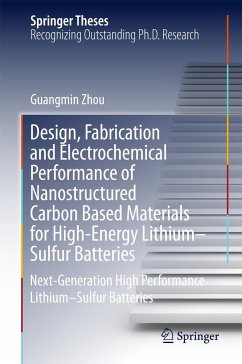
Design and Control of Highly Conductive Single-Molecule Junctions
A Focus on the Metal-Molecule Interface
Versandkostenfrei!
Versandfertig in 6-10 Tagen
76,99 €
inkl. MwSt.
Weitere Ausgaben:

PAYBACK Punkte
38 °P sammeln!
This thesis describes improvements to and control of the electrical conductance in single-molecule junctions (SMJs), which have potential applications in molecular electronics, with a focus on the bonding between the metal and molecule. In order to improve the electrical conductance, the pi orbital of the molecule is directly bonded to the metal orbital, because anchoring groups, which were typically used in other studies to bind molecule with metal electrodes, became resistive spacers. Using this direct pi-binding, the author has successfully demonstrated highly conductive SMJs involving benz...
This thesis describes improvements to and control of the electrical conductance in single-molecule junctions (SMJs), which have potential applications in molecular electronics, with a focus on the bonding between the metal and molecule. In order to improve the electrical conductance, the pi orbital of the molecule is directly bonded to the metal orbital, because anchoring groups, which were typically used in other studies to bind molecule with metal electrodes, became resistive spacers. Using this direct pi-binding, the author has successfully demonstrated highly conductive SMJs involving benzene, endohedral metallofullerene Ce@C82, and nitrogen. Subsequently, the author investigated control of the electrical conductance of SMJs using pyrazine. The nitrogen atom in the pi-conjugated system of pyrazine was expected to function as an anchoring point, and two bonding states were expected. One originates primarily from the pi orbital, while the other originates primarily from an n stateof the nitrogen. Measurements of conductance and dI/dV spectra coupled with theoretical calculations revealed that the pyrazine SMJ has bistable conductance states, in which the pyrazine axis is either tilted or parallel with respect to the junction axis. The bistable states were switched by changing the gap size between the metal electrodes using an external force. Notably, it is difficult to change the electrical properties of bulk-state materials using mechanical force. The findings reveal that the electron transport properties of a SMJ can be controlled by designing a proper metal-molecule interface, which has considerable potential for molecular electronics. Moreover, this thesis will serve as a guideline for every step of SMJ research: design, fabrication, evaluation, and control.














